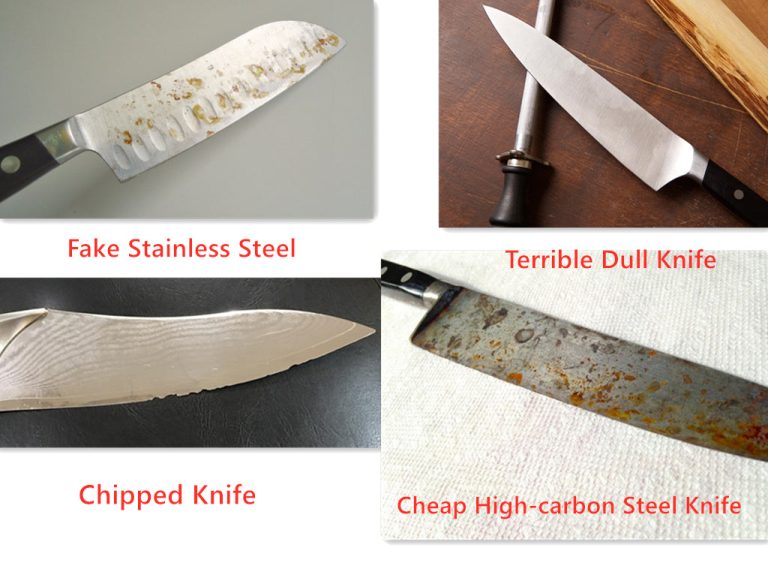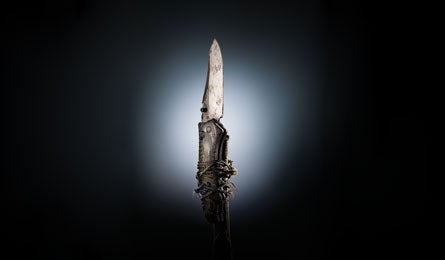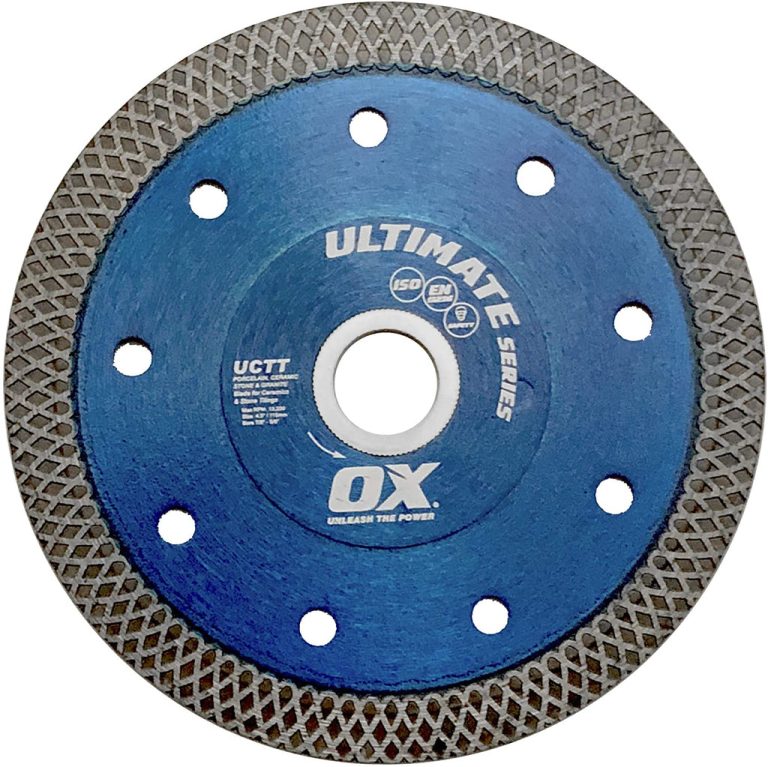How to Sharpen a Fishing Knife
To sharpen a fishing knife, begin by holding the knife at a 20-degree angle and gently run a sharpening stone along the blade in a sweeping motion. Make sure to repeat this process on both sides of the blade until the knife is sharp.
Maintaining a sharp fishing knife is essential for efficient and safe fish processing, as a dull blade can easily slip and cause accidents. Additionally, a sharp knife ensures clean cuts, resulting in better filleting and scaling of the fish. By regularly sharpening your fishing knife, you can extend its lifespan and ultimately enhance your fishing experience.
Benefits Of A Sharpened Fishing Knife
| Benefits of a Sharpened Fishing Knife |
| When your fishing knife is sharpened properly, it offers several advantages that enhance your overall fishing experience. |
|

Credit: www.aftco.com
When To Sharpen Your Fishing Knife
Signs of a dull blade:
One of the most important skills every angler should possess is how to properly sharpen a fishing knife. However, knowing when to sharpen your knife is equally crucial. Signs of a dull blade can include a decrease in cutting efficiency, as you may find yourself applying more pressure to make clean cuts. Another indication is a dull or rounded tip that struggles to puncture bait or make precise incisions.
Frequency of sharpening:
The frequency of sharpening your fishing knife varies depending on usage and the quality of the blade. If you fish regularly or encounter tough, hard-skinned fish, you may need to sharpen your knife more frequently. As a general rule, it is recommended to sharpen your fishing knife every few months or at the first sign of dullness. This will help maintain its optimal performance and ensure you have a sharp, reliable tool at all times.
Using A Sharpening Stone
When it comes to sharpening a fishing knife, using a sharpening stone is a traditional and effective method. Choosing the right stone is crucial for achieving optimal results. A high-quality stone with a medium to fine grit is recommended for sharpening fishing knives.
Preparing the stone before use is important. It should be soaked in water for about 10 to 15 minutes to ensure proper lubrication while sharpening the knife.
Holding the knife correctly is essential for safe and effective sharpening. Ensure a firm grip with your dominant hand, while using your other hand to stabilize the blade.
When sharpening, follow the correct techniques to achieve a sharp edge. Maintain a consistent angle of about 20 degrees and apply gentle pressure as you glide the knife across the stone in smooth, sweeping motions. Repeat this process a few times on each side of the blade.
To test the sharpness of the knife, carefully run your finger lightly across the blade. If it easily catches and shaves off some skin, the knife is appropriately sharpened.
Sharpening With A Whetstone
To sharpen a fishing knife, you can use a whetstone. Choosing the right whetstone is crucial for effective sharpening. Look for a whetstone that matches the blade’s hardness. Before using it, soak the whetstone in water for around 10-15 minutes. This helps to prevent the stone from drying out during the sharpening process. When sharpening the knife, hold it at a consistent angle against the whetstone. A 20-degree angle is usually recommended for most fishing knives. Apply gentle pressure while sliding the knife across the stone, ensuring even sharpening on both sides of the blade. Repeat this process until the desired sharpness is achieved. Remember to regularly rinse the knife and stone with water to remove any metal particles. Sharpening your fishing knife regularly ensures optimal cutting performance during your outdoor adventures.
Utilizing A Knife Sharpening Tool
Utilizing a Knife Sharpening Tool
When it comes to sharpening a fishing knife, it’s essential to have the right tool for the job. There are various types of knife sharpening tools available. Two common options are manual and electric sharpeners.
Types of knife sharpening tools:
| Type | Description |
|---|---|
| Manual Sharpener | A manual sharpener requires manual effort to sharpen the knife. It typically consists of sharpening stones or ceramic rods that help to restore the blade’s sharpness. |
| Electric Sharpener | An electric sharpener automates the sharpening process. It consists of rotating abrasive wheels that quickly sharpen the knife. Electric sharpeners are convenient and provide consistent results. |
Setting up the sharpener:
Before sharpening, ensure that you set up the sharpener correctly. Follow the manufacturer’s instructions to adjust any necessary settings. Make sure the sharpener is securely positioned on a stable surface.
Sharpening process:
To sharpen the fishing knife, carefully slide the blade through the sharpening slot, maintaining a consistent angle. Repeat this process several times, alternating between sides, until you achieve the desired sharpness.
Safety precautions:
When sharpening a knife, remember to follow safety precautions. Always wear protective gloves to avoid accidents. Ensure that the knife and sharpener are clean and dry before starting. Handle the knife with care to prevent injuries.
Cleaning Your Knife
In this blog post, we will discuss the proper cleaning techniques for sharpening a fishing knife. To keep your knife in optimal condition, it is important to regularly clean it after each use.
1. Removing debris and rust: Start by rinsing the knife with warm water to remove any dirt or debris. If there is rust present, gently scrub it using a mixture of baking soda and water. The abrasive nature of baking soda will help remove the rust without damaging the blade.
2. Drying and storing the knife: After cleaning, thoroughly dry the knife with a clean cloth to prevent any moisture from causing rust. It is essential to store your knife in a dry place to avoid any environmental damage. Consider using a knife sheath or protective cover to keep the blade safe.
By following these proper cleaning techniques, you can ensure that your fishing knife remains sharp and durable for years to come.
Honing Your Knife
Honing Your Knife
When it comes to sharpening a fishing knife, honing is an essential step that should not be overlooked. Honing helps to refine the edge of the blade, resulting in a sharper and more efficient cutting tool.
Honing versus sharpening
Honing is often misunderstood as sharpening, but they are two different processes. While sharpening involves removing metal from the blade to create a new edge, honing is simply realigning the existing edge to maintain its sharpness.
Honing tools and techniques
There are various tools and techniques available for honing a fishing knife. One popular tool is a honing rod, which is a long, cylindrical rod made of steel or ceramic. To hone the knife, you simply run the blade along the rod at a consistent angle.
Establishing a honing routine
To keep your fishing knife in optimal condition, it is important to establish a honing routine. Regularly honing the knife after each use or every few weeks will help maintain its sharpness and prolong its lifespan.
Ensuring Longevity
Ensuring Longevity:
A fishing knife is an essential tool for any angler, but its usefulness depends on proper handling. To ensure a long lifespan for your knife, it is crucial to follow these guidelines:
- Proper knife handling: Handle the knife with care, avoiding unnecessary force or pressure. Always hold the handle firmly to maintain control and prevent accidents.
- Avoiding misuse and abuse: Do not use the fishing knife for purposes other than its intended use. Avoid prying, scraping rocks, or cutting through frozen objects as it can damage the blade.
- Regular inspections and maintenance: Routinely inspect the knife for any signs of rust, corrosion, or dullness. Clean the blade after each use, dry it thoroughly, and apply a thin coat of oil to prevent rusting.
By following these guidelines, you can keep your fishing knife sharp, reliable, and ready for every fishing adventure.
Conclusion
To keep your fishing knife in optimal condition, sharpening it regularly is essential. A dull knife not only makes your fishing experience challenging, but it can also be dangerous. By following the step-by-step guide outlined in this blog post, you now know how to sharpen a fishing knife effectively.
Remember to use the right sharpening tools, such as a sharpening stone or a honing rod, and to maintain the correct angle while sharpening. Additionally, make sure to clean and dry your knife properly after each use to prevent rust and corrosion.
With a sharp fishing knife, you’ll be able to effortlessly tackle any task on the water, from scaling fish to cutting line. By investing a little time in sharpening your knife, you’ll ensure that it remains a reliable tool for many fishing adventures to come.
Happy fishing!






